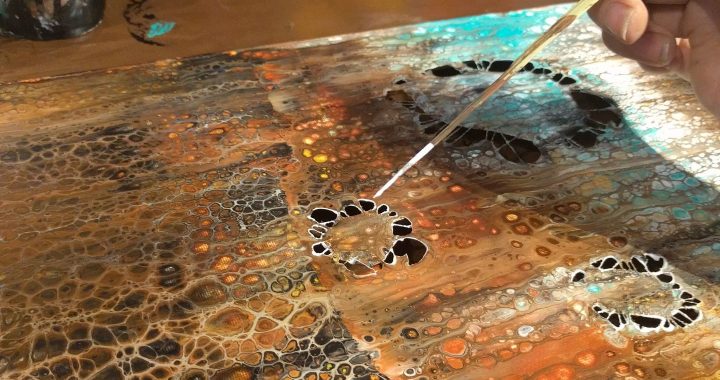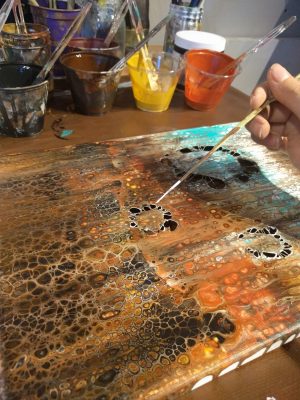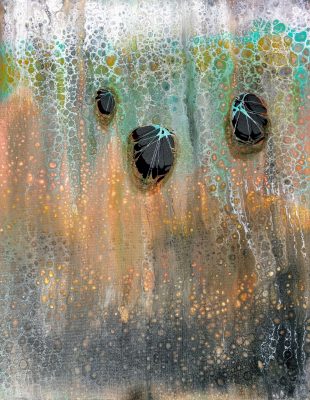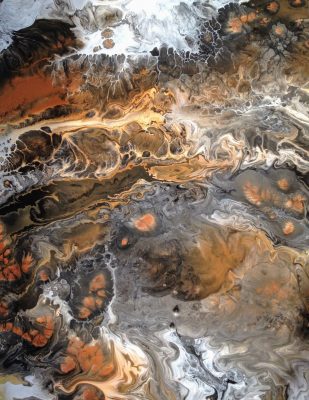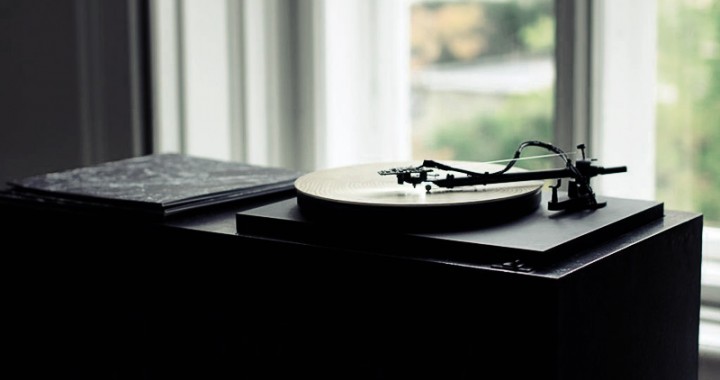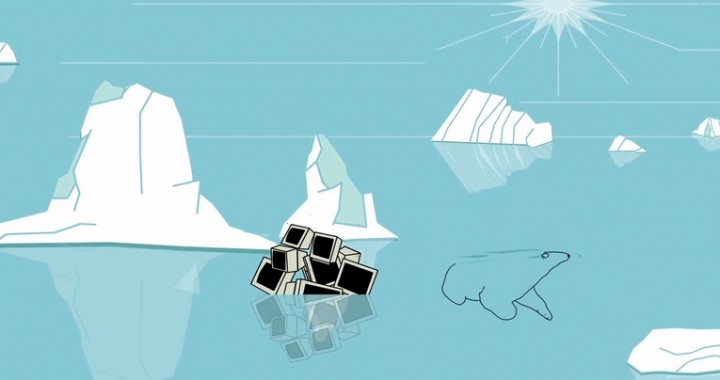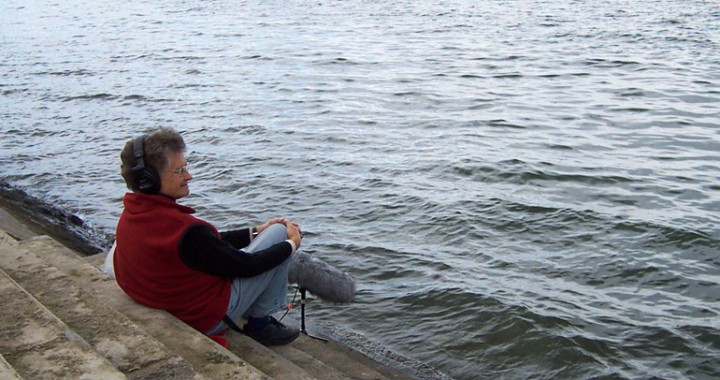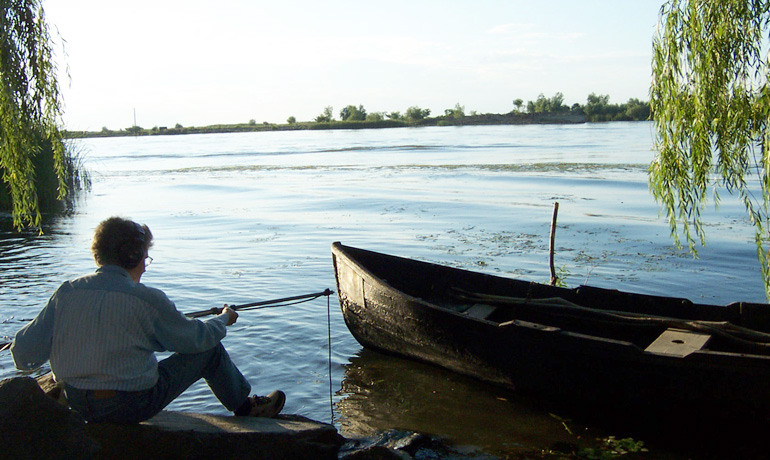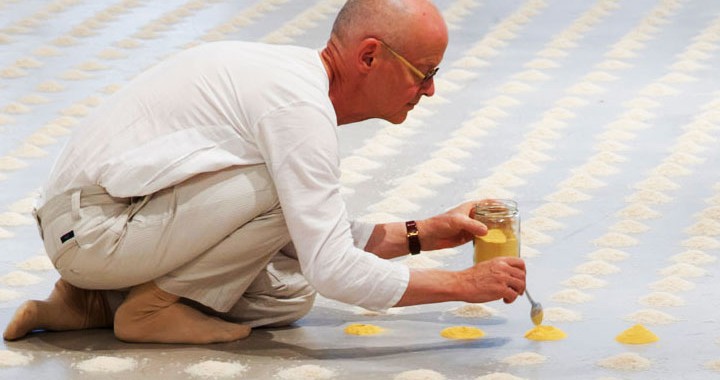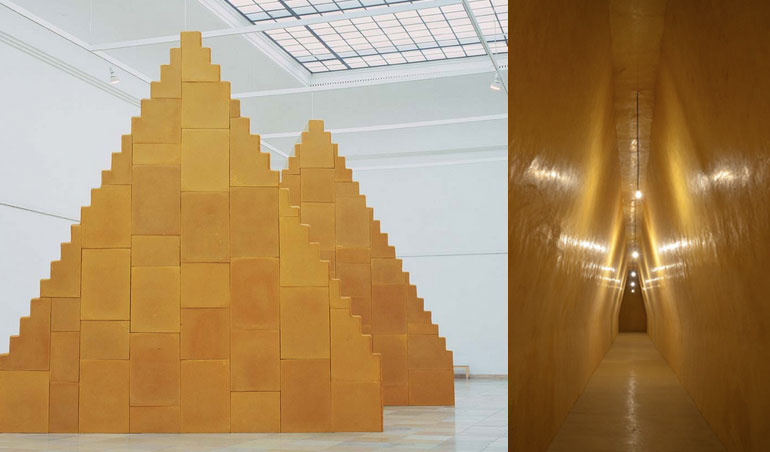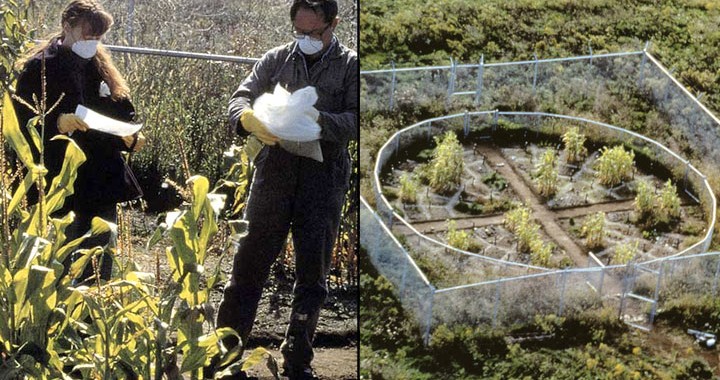Harrower is both a research ecologist and artist, and uses fibers and oils from her study organisms to manipulate the physical properties of her paints and tell the story of climate change and species loss. In her series Fungal Soil Mutualisms, she explores how the changing climate may alter symbiotic interactions between soil fungi and Joshua trees and how that could impact tree survival.
Author Archives: jharrower
BARTHOLOMÄUS TRAUBECK
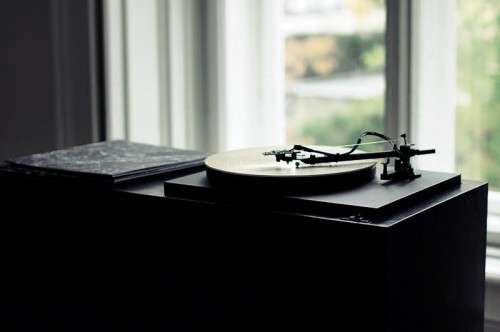
Years, 2011, Galerie Lisa Ruyter Vienna, Photo: Andreas Fleckl
Bartholomäus Traubeck builds equipment to translate the information contained in tree rings into music.
Years, 2011
Tree rings can provide information regarding the age of a tree, as well as different environmental conditions that the tree experienced throughout its life time. This can allow researchers to understand ecological conditions such as droughts, floods, temperature extremes, fires and disease. Traubeck’s equipment translates the rings on a turntable, using sensors rather than a needle, that gathers information about the wood’s color, patterns, and texture, and uses an algorithm to translate that into piano music.
MARINA ZURKOW
Zurkow combines environmental themes with popular culture to create artworks that are both playful and thought provoking.
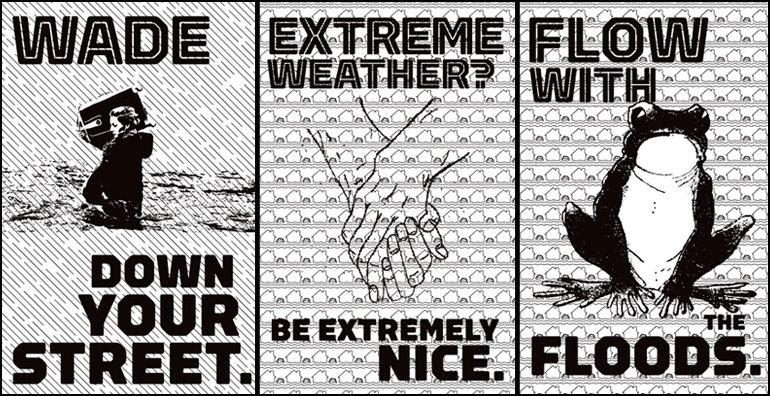
Dear Climate, 2014
Zurkow along with Una Chaudhuri, Oliver Kellhammer, Fritz Ertl, and Sarah Rothberg create soundscapes and agitprop posters that highlight the fears and desires associated with climate change. The group presents their posters to the climate with an open letter:
Dear Climate,
…
These broadsheets, really just bits of paper, are our missive, our small odes of affection and awe, and our self-helpful hints that have been scattered by our whirlwinds. They are our apologies, our jest and protest, our bright ideas, bad ideas, and mental quick fixes. We’d like to make amends, to start by shifting relations: with you, with other species, and our own tempestuous inner climate, too.
…
If you’ll accept them, dear Climate, these offerings will seal our promise to meet the terrors ahead and build the tolerances they will demand.1
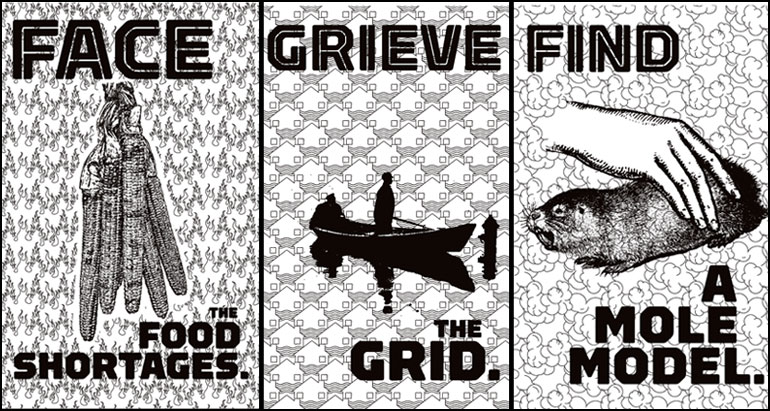

Poster Child, 2007
In this animated installation, Zurkow merges icons of climate change and American gun culture. A polar bear and unclothed, pink children inhabit an Arctic seascape—they ride melting icebergs on a shimmering ocean littered with electronic waste. Both bear and children could be seen as symbols of innocence and vulnerability, but Zurkow subverts these associations with images of violence. The children carry guns that they enthusiastically fire into the air; the bear tears into the flesh of prey she’s recently caught—blood stains her paws and the ice floe she rides. In Zurkow’s animation, the bear and children oscillate between aggressor and victim.2 They perhaps represent our own difficult position in the midst of climate change—our daily habits contribute to global warming and environmental degradation and we also suffer the consequences of unstable weather patterns and economic dislocation.
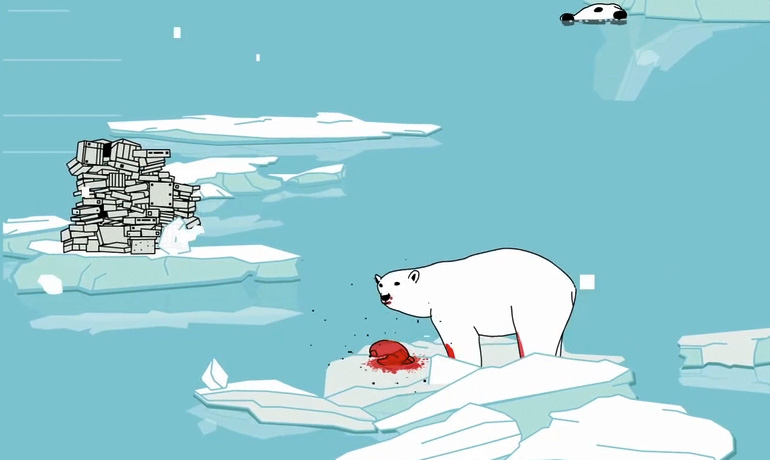
1 Dear Climate website.
2 Linda Weintraub, To Life! Eco Art in Pursuit of a Sustainable Planet (Berkeley, CA: University of California Press, 2012), 314-318.
WOLFGANG LAIB
Laib combines ephemeral materials—pollen, beeswax, milk, and rice—with long-lasting materials like stone, brass, and wood to create minimalist sculptures and installations. His refined shapes, warm colors, and aromatic materials invite us to slow down and contemplate the sensory richness of the world.
Milkstones
Laib carves a slight indentation in the top of a polished white marble brick and fills that indentation with milk. The milk creates a seamless skin on the top the marble—the ephemeral and permanent perfectly joined. Laib states, “how temporary milk is and how eternal a stone is.”1
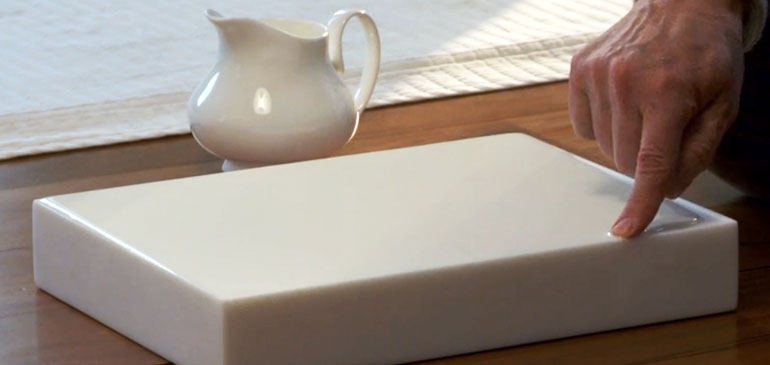
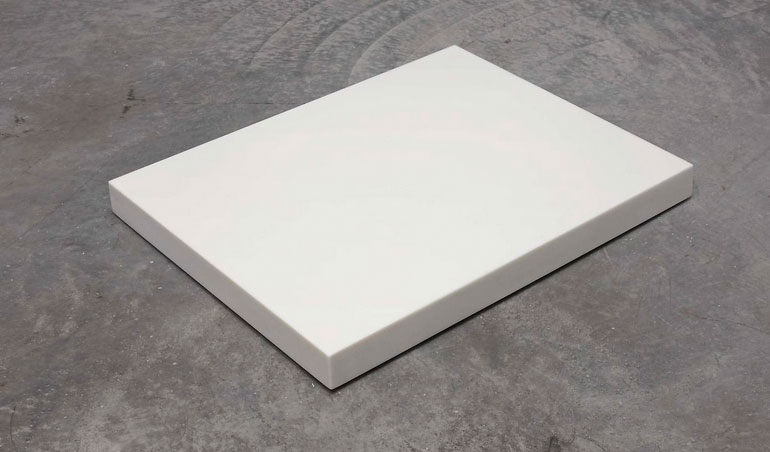
Pollen Sculptures
Laib painstakingly collects pollen from the wildflowers and trees close to his home in Germany. He then carefully sifts the pollen on to a museum or gallery floor to create simple geometric shapes. Laib states, “pollen is the potential beginning of the life of the plant. It is as simple, as beautiful, and as complex as this.”2
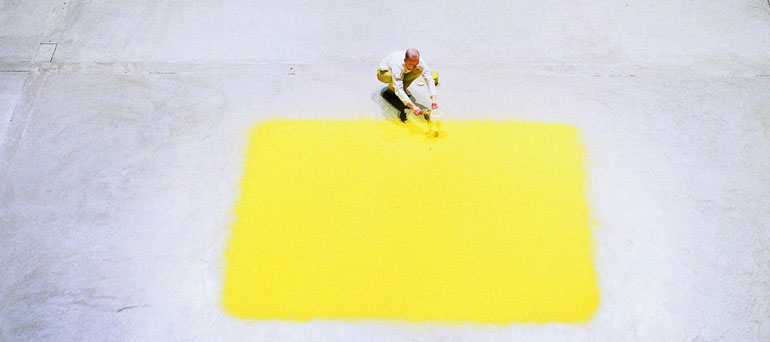
MEL CHIN
Chin works as an artist and community activist. His collaborative projects combine pragmatic solutions to real-world problems with aesthetic and conceptual experiments.
Revival Field, 1991
Chin took inspiration from botanist Rufus Chaney’s research on hyperaccumulator plants—plants that pull heavy metals from the soil. For Revival Field, Chin planted hyperaccumaltors at Pig’s Eye Landfill, a contaminated Superfund site in St. Paul, MN. The project was conceived as a scientific experiment that asked: Can plants remove soil toxins? It was also an eco-art sculpture that highlighted the potential to remedy polluted environments.1
Operation Paydirt, 2006-Present
After hurricane Katrina stuck New Orleans, Chin decided he could help the city recover by focusing his attention on the high levels of lead in the city’s older neighborhoods. Before the hurricane hit, thirty to fifty percent of the neighborhoods’ children suffered from lead poisoning. Lead poisoning affects brain development, damages the nervous system and kidneys, and leads to behavioral problems.2 When Chin discovered that remediation of the soil in New Orleans would cost $300 million, he created Fundred—an art project that encourages children and their families to create art works in the shape of hundred dollar bills. Chin collects the Fundreds and plans to present them to Congress as a symbolic gesture that raises awareness of lead contamination and asks the government to appropriate funds to remedy the problem. Chin sees the New Orleans project as the first step in a bigger project that aims to remediate contaminated soil in cities across the U.S.3
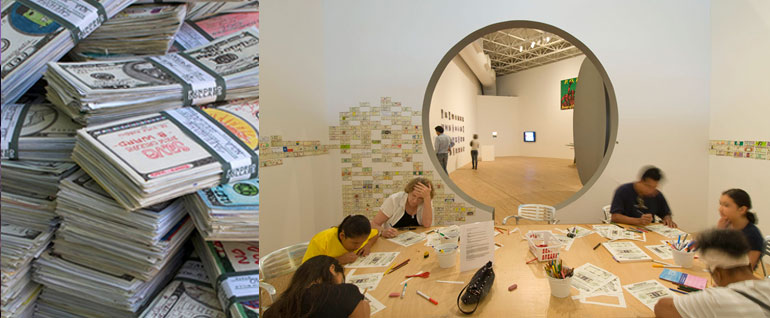
1“Mel Chin in Conversation with Fareed Armaly and Ute Meta Bauer,” in Nature, ed. Jeffrey Kastner, (London, UK: Whitechapel Gallery Ventures Limited, 2012), 174-176.
2Operation Paydirt: About.
3Linda Weintraub, To Life! Eco Art in Pursuit of a Sustainable Planet, “Mel Chin: Soil Remediation,” (Berkeley, CA: University of California Press, 2012), 135-140.
